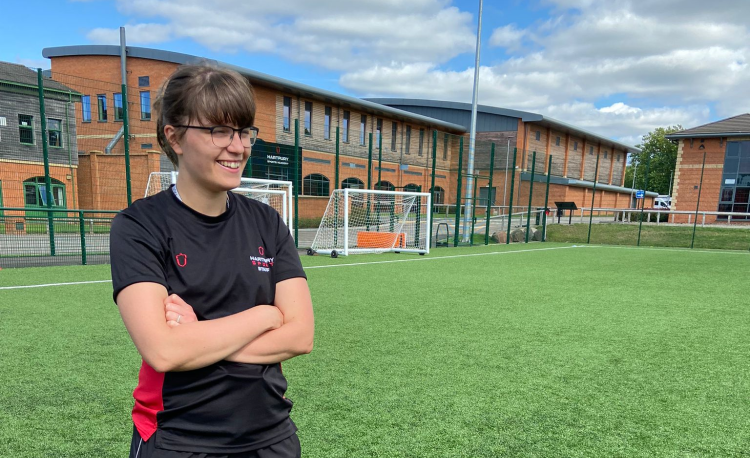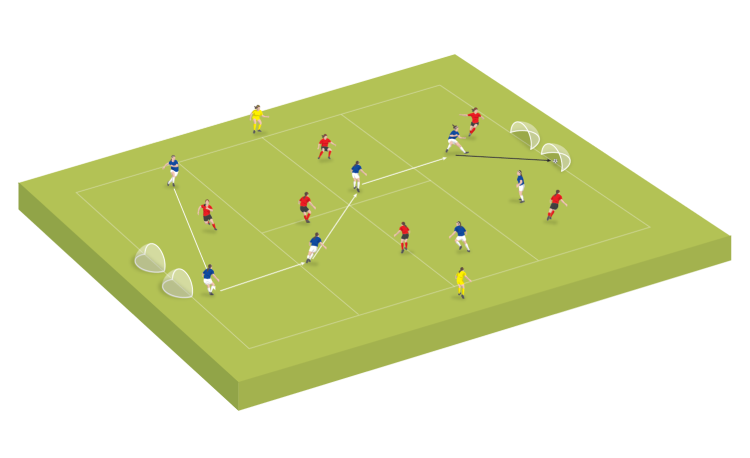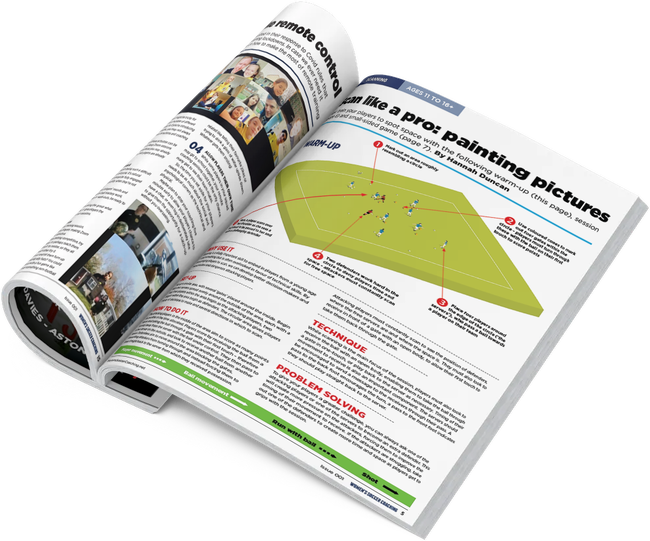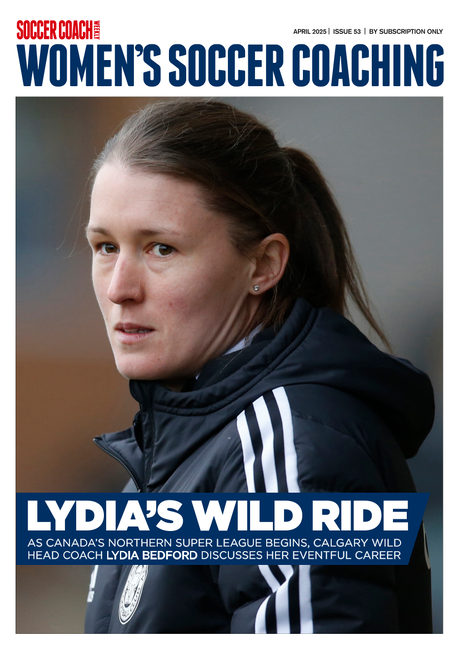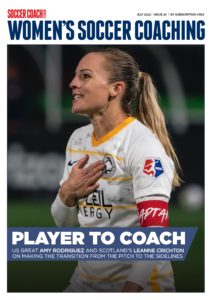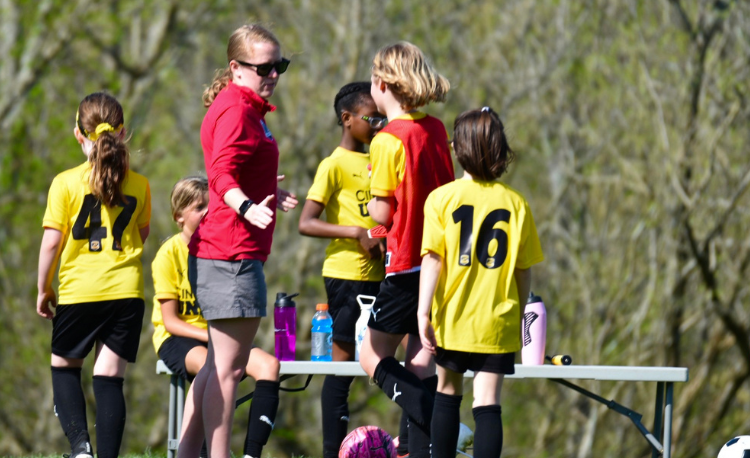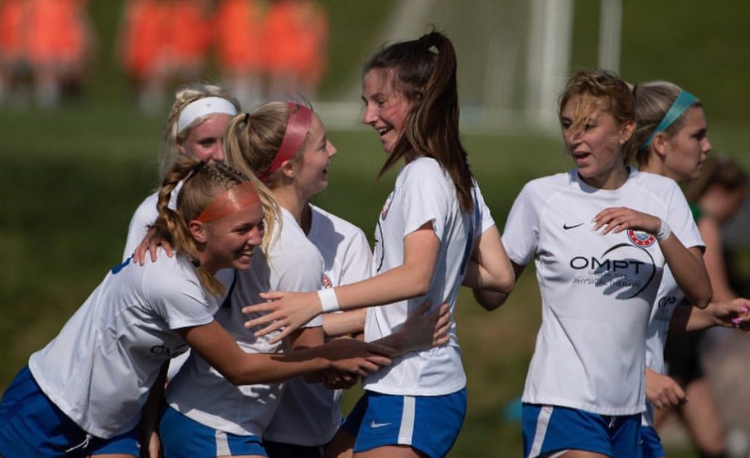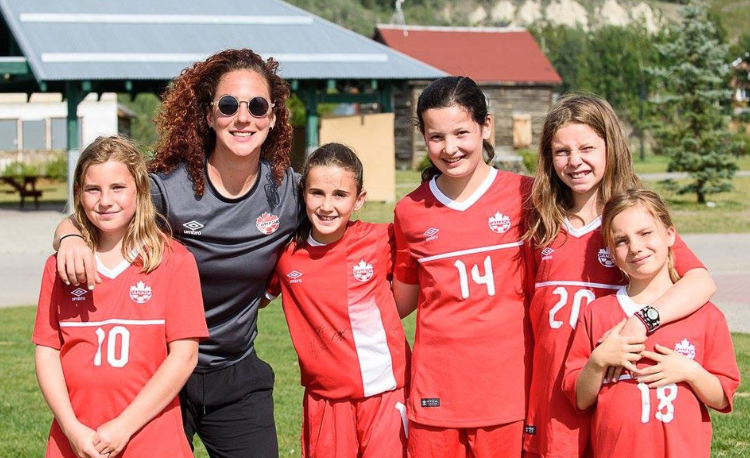You are viewing
1 of your 3 free articles
Embedding a 'Uefa B' process at grassroots
FA coach mentor and developer Beth Smith discusses learnings you can take from one of the top coaching courses and how to implement them on the field.
Wherever you are on your coaching journey, the ‘buy-in’ to the process of learning about yourself, your team and your club is so important.
Within the last 12 months, I started my journey towards the Uefa B licence, which is a highly sought-after opportunity within the English game due to opportunities being limited in terms of frequency of delivery.
I felt lucky to get a place and I also felt as though I had an opportunity to develop a culture and a community that embraced the Uefa B licence expectations within my grassroots setting.
Gloucestershire County League Division 2 - tier 11 of the English game - was the stage for a newly formed development squad to enter in the 2022-23 season.
Then there was me: a player–coach looking to make a positive impact on the field.
Principles of play, priorities of playing through, around or over, patterns of play, roles and responsibilities of each player and position, development of a periodisation model - these were all concepts that hadn’t really run through my head before.
"The evolvement of technical detail in your coaching can be overwhelming..."
I had, of course, been aware of them all but I had never been in the position to implement them with purpose, to see their potential or impact on the team I was coaching.
To summarise my experience, I’ve categorised the most valuable topics that have revolutionised my thought processes through this learning journey.
Technical detail
What do you want to see as outcomes from your players? What does it look like?
The evolvement of technical detail in your coaching can be one of the most overwhelming feelings.
You ask yourself: Do I know enough to coach what I want to see to someone else? Can I develop a plan (periodisation) and break this down into topics (in possession, out of possession) to then progress my thinking, and to ultimately enhance players’ development, whether cognitively (game understanding) or physically (positionally, physical returns)?
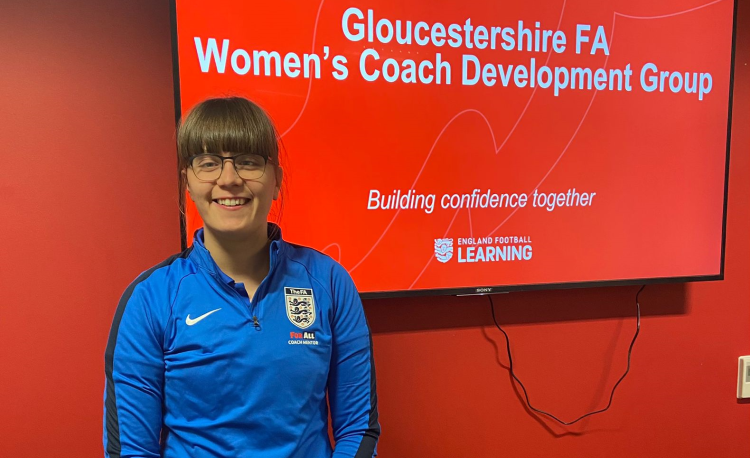
Doing this can be difficult, especially when your club doesn’t have anything in place already and you work in isolation.
My strategy? Try it yourself, experiment, allow your ideas to evolve, see how it suits and amend where necessary.
Understanding technique, skill, terminology – the ‘how to execute’ something - was one of the most eye-opening experiences.
I forced myself to develop my understanding. If I don’t know what runs I want my forward three to make, and why, how will they know or develop as players? If I don’t know how I want my defenders to defend 1v1, or how they set up from our goalkeeper, how will I be able to promote this detail in my coaching?
Focusing on specific players
Primary, secondary, tertiary units/players
Understanding what I wanted to see from my players was key.
How can I encourage a player to receive on their back foot to play forward when we are playing out from the back from our goalkeeper if I don’t understand ‘how we want to play’ or what I wanted the player to do with the ball when they receive it?
My practices started to be informed by my thought processes – what do I want the players to do and, more importantly, why do I want them to do that? How does that help the team progress play and enhance goalscoring opportunities?
To simplify this, the Uefa B encourages you to think about ’primary’, ’secondary’ and ’tertiary’ players, individually and within units. This was revolutionary to my planning.
The focus now turned to specific players within practices. The practices started to become scaffolded, layered and thought through.
For example, when playing out from the back, my centre-back receives the ball first - now what? They are my primary player. They are on the ball and determine the ‘what next?’.
Secondary players are typically around the ball – does their movement influence the decision-making of the primary player?
Tertiary players are then ‘away’ from the ball – they still add value if they are not close to play, as what they do impacts others and how we can play progressively. This might be generating a passing lane or peeling off a defender to generate space in front for other players to run into.
Making all players feel valued in this environment is important. Everyone has a role to play in every practice but some practices focus more on specific units and topics.
Formats of the game
Lead-in practices, functions, phases of play, small-sided games
We have just seen in the previous section what detail we need to give players and how we make our practices specific - but the Uefa B course also provided an insight into what this might look like from a practice design perspective.
Terminology such as ‘lead-in practices’, ‘functions’, ‘phases of play’ and ‘small-sided games’ were often verbalised and expected within planning.
"The Uefa B asks you to think about ’primary’, ’secondary’ and ’tertiary’ players..."
Having also developed the confidence to structure practices - considering primary, secondary and tertiary units, as well as understanding what I wanted from the practice - it all came together nicely.
Sometimes there can be too much terminology but in this learning experience it helped.
Here is what those four terms mean.
Lead-in practice: A practice that provides core skills in preparation for the main functional activity.
Function: A situational practice where a player or small group of players develop understanding of their roles, responsibilities and required skills.
Phase of play: Situational practice using the width of a pitch but with reduced length. Focus may be on a specific area and units of players may be used in an opposed practice to generate pictures within a ‘real’ environment.
Small-sided game: A directional game practice involving fewer players than an 11-a-side, developing technical and tactical awareness and team understanding.
Related Files
Newsletter Sign Up
Newsletter Sign Up
Discover the simple way to become a more effective, more successful soccer coach
In a recent survey 89% of subscribers said Women's Soccer Coaching makes them more confident, 91% said Women's Soccer Coaching makes them a more effective coach and 93% said Women's Soccer Coaching makes them more inspired.
*includes 3 coaching manuals
Get Inspired
All the latest techniques and approaches
Women's Soccer Coaching offers proven and easy to use soccer drills, coaching sessions, practice plans, small-sided games, warm-ups, training tips and advice.
We've been at the cutting edge of soccer coaching since we launched Soccer Coach Weekly in 2007, creating resources for the grassroots youth coach, following best practice from around the world and insights from the professional game.
